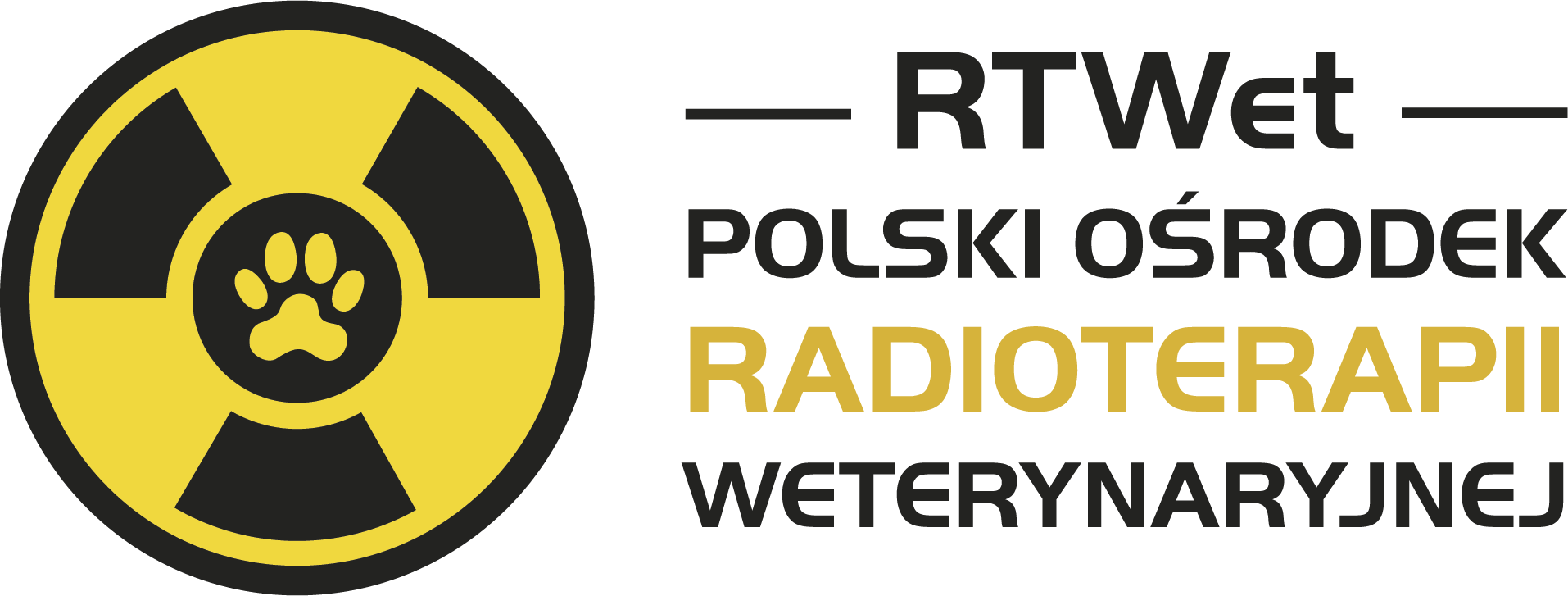
Consultation and treatment procedure
Radiotherapy is a tumour treatment method using high-energy ionizing radiation, which penetrates the site of the neoplastic lesion, leading to its destruction.
Treatment process:
- Completing the patient form on our website (Form for the owner)
- Each form is analysed by an oncologist prior to arranging a consultation.
- Patient is scheduled for a consultation with an oncologist (preferably stationary at the Center in Miedniewice or, in some cases, online). For this visit, please bring all the required medical records (What to bring to the consultation ?).
This is a very important stage. A vet will examine the patient, assess their health, discuss the different radiotherapy protocols and side effects of each protocol.
Side effects – click to learn more.
After consultation, the patient is qualified for radiotherapy treatment. The oncologist often recommends additional tests before starting treatment. These can be blood tests, heart scan to assess the patient’s general health and the safety of general anaesthesia. Additionally, we might recommend additional tests in the form of biopsies or additional imaging to confirm the diagnosis and determine the stage of the cancer. These tests can also be performed at the RTWet in Miedniewice.
- The next step is performing computed tomography in order to plan radiotherapy. This test is carried out at the RTWet Centre. During the examination, the patient is placed on a special table in the exact position in which will be placed for each radiotherapy treatment session. Our radiation oncologist uses this CT scan to visualize the neoplastic lesion and to plan radiotherapy in a specialized computer program. We can use this CT scan for diagnostic purposes as well, i.e. you can additionally obtain a full radiological report for additional charge, if it has been previously agreed with the oncologist during the consultation.
During CT scan, precise positioning of the patient is very important. For this purpose, we use various types of immobilization devices: thermoplastic masks in cases of head and neck cancer, mattresses in cases of lesions located elsewhere, boluses, etc. CT scan is carried out under superficial general anaesthesia, which lasts about 1-1.5 hours. During this procedure, patients are looked after by a team of experienced anaesthesiologists who monitor patients’ vital signs. Prior to general anaesthesia, we often ask for current blood tests and a heart scan performed. Our patients need to be fasted, which means no food for 6-8 hours before the scheduled anesthesia (water is allowed at all times). CT scan is usually scheduled a few days after consultation with the oncologist. In some cases, especially for patients traveling from far, we might be able to schedule it for the day of the consultation.
- Medical rounds – each patient is discussed by our team of specialists, including the medical oncologist and radiation oncologist. For each patient, an individual treatment plan is established, with precise area of irradiation, the total dose and the number of fractions. Doses may be administered in fractions of 4 to 20, daily or at intervals of several days. Usually fractions are not given on Saturdays and Sundays.
- Treatment plan – on the basis of computed tomography, the radiation oncologist prepares a precise treatment plan. It is a complicated process that takes several hours. For this purpose, a high-quality specialized software is used. The main purpose of planning is to calculate the highest possible dose delivered to the tumour with the lowest possible dose received by the surrounding organs. The radiotherapy plan is ready after a few days, in exceptional cases the treatment plan is ready for the next day.
- We schedule a date to start the treatment, usually a few days after the CT scan. In exceptional cases, by prior arrangement, treatment may begin the next day.
- Treatment is delivered on the outpatient bases and usually takes place in the morning. The radiotherapy fraction is administered under superficial anaesthesia and, although it takes only a few minutes, please reserve an average of one hour for the patient’s premedication and recovery. All general anaesthesia is performed using DatexOhmeda gas anaesthesia machines to allow a full patient monitoring.
- After finishing the treatment, the oncologist provides recommendations for a follow-up care.
- It is possible to stay for the duration of radiotherapy in the Center in Miedniewice in the hotel part (Accommodation).
